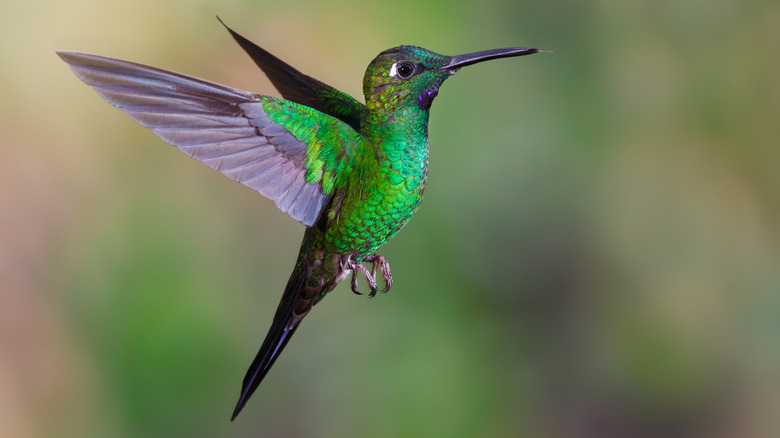Stunning Varieties Of Balsam Flowers That Will Bring Hummingbirds Back Every Year
Hummingbirds' unique iridescent feathers, hovering flight style, and miniature size have captured the hearts of many home gardeners, inspiring DIY hummingbird feeders as well as many other methods to attract these birds to our gardens. Since they are useful pollinators in a home garden, and there are many flowers that hummingbirds absolutely love, it makes sense for hummer fans to plan a garden that will lure as many of them as possible. While there are a few perennials hummingbirds can't get enough of, there are a few specific annuals that should bear consideration when it comes to bringing these dainty birds to your yard.
One type of annual you may not have considered for your garden is balsam, or Impatiens balsamina. These gorgeous flowers fit hummingbirds' preference for brightly colored petals and can be planted in containers, shaded areas, and alongside walking paths. Though other species of impatiens have likely caught your eye, there are certain heirloom varieties that have been used since the Victorian era which may have slipped under the radar of the average home gardener.
Balsam varieties to try (and avoid)
There are several balsam varieties that can attract hummingbirds to your garden, who love nectar-filled plants, especially in shades of red. One is the Camellia Flower balsam, which features round, rose-like blooms in pink, white, red, or lavender shades. Another hummingbird favorite is Bush Mix balsam, which grows red, purple, pink, or salmon flowers at the top of the plant. Similarly, the dwarf cultivar Topknot balsam features doubled flowers which grow at the top of the plant rather than along the stems. For a particularly distinct, variegated flower, choose Peppermint Stick balsam and its flowers of speckled red and white.
One variety of balsam you need to keep out of your garden is Himalayan balsam, or Impatiens glandulifera. This member of the impatiens family is considered invasive in the U.S., and while its bright flowers may draw the occasional hummingbird, its aggressive overgrowth will hurt other plants in your garden, making it a flower to avoid.
How to care for balsam
Though balsam is an heirloom variety of impatiens, making its seeds less likely to appear in your average garden center, it is relatively easy to grow from seed once acquired, whether direct-sown or started indoors six to eight weeks before final frost. Plant your balsam in full sun to part shade and expect blooms between May and first frost. At 2 inches tall, thin your balsam seedlings; at around 4 inches tall, if you wish to encourage branching, pinch off the top of the plants. Since heirloom seeds can be rarer to come by, you can dry and store balsam seed pods at the end of the growing season if you hope to sow the flowers again the next year.
Balsam has a wide growing range, thriving in USDA zones 2 through 11. It is very drought and heat tolerant, but be sure to water it amply when possible. The soil should always be moist. Once flowers begin blooming, you can remove some upper leaves of the plant to better view them if desired. Just be sure to locate your seedlings in an area primed for hummingbird-viewing!


